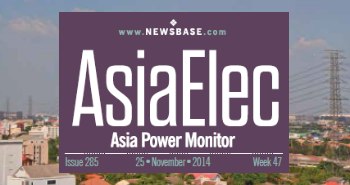ASIAELEC: Pakistan opens $1.7bn Chinese-built power line

Pakistan has opened the $1.7bn, 660-kV Matiari-Lahore power line as part of government efforts to use Chinese money and technology to shore up the country’s power grid.
The 878-km line forms part of the China-Pakistan Economic Corridor (CPEC) and was financed and built by State Grid Corporation of China, which will operate it for the next 25 years.
Hammad Azhar, Pakistan’s energy minister, said the project would bring stability to the country’s power system. Speaking at the online ceremony, he said the project would “enhance transmission capability and bring relief to consumers”.
Electricity generation in Pakistan has increased dramatically in recent years, thanks to the large-scale construction of mainly coal-fired plants funded by China.
As a result, the country has an installed capacity of around 37 GW and peak demand of only 25 GW, although this is growing at a rate of about 5% a year.
However, the grid is able to handle only 22 GW of power, resulting in chronic blackouts and load-shedding, particularly in the summer when demand is highest.
However, problems occur in winter. In January, the entire country suffered a blackout after a fault at a power station in south-east Sind Province caused the grid to lose its 50Hz frequency, which led to power stations throughout the country shutting down.
This makes the reinforcement of the grid, arguably, the single most important infrastructure scheme for the country’s socio-economic development.
Zhang Jianhua, head of China’s National Energy Administration, told those present at the ceremony that the Matiari-Lahore line was the first large-scale transmission project of the CPEC, and would provide “solid assurance” for power transmission in the south and power supply in the north.
Speaking about the economic corridor in general, Azhar added: “The CPEC is of utmost importance for Pakistan. It will enable the country to enhance industrial production, upgrade energy and communication infrastructure and improve connectivity within the region.”
Of Pakistan’s 207mn people, roughly 58mn lacked access to grid electricity in 2018, including 46% of the rural population.


Follow us online